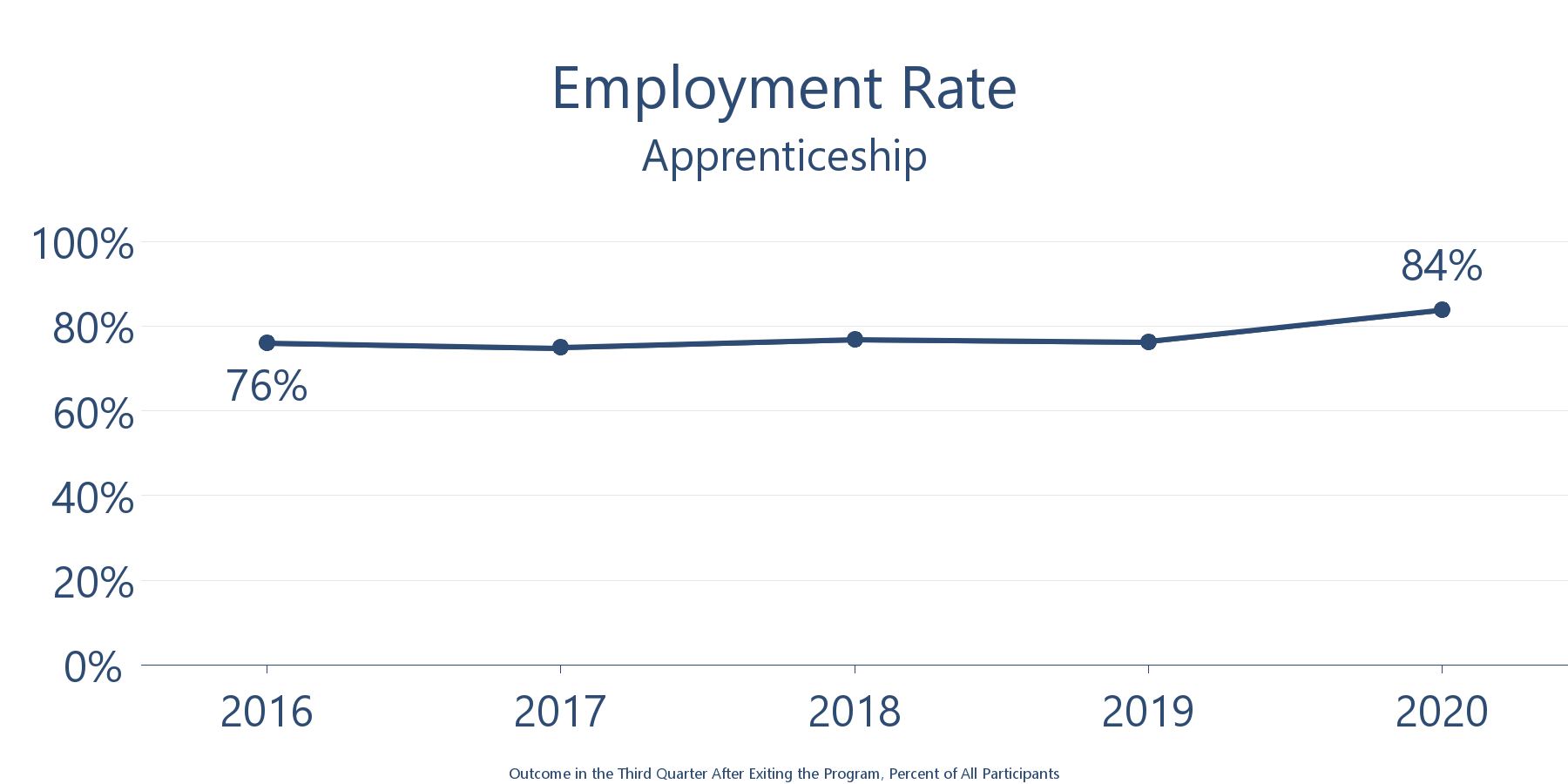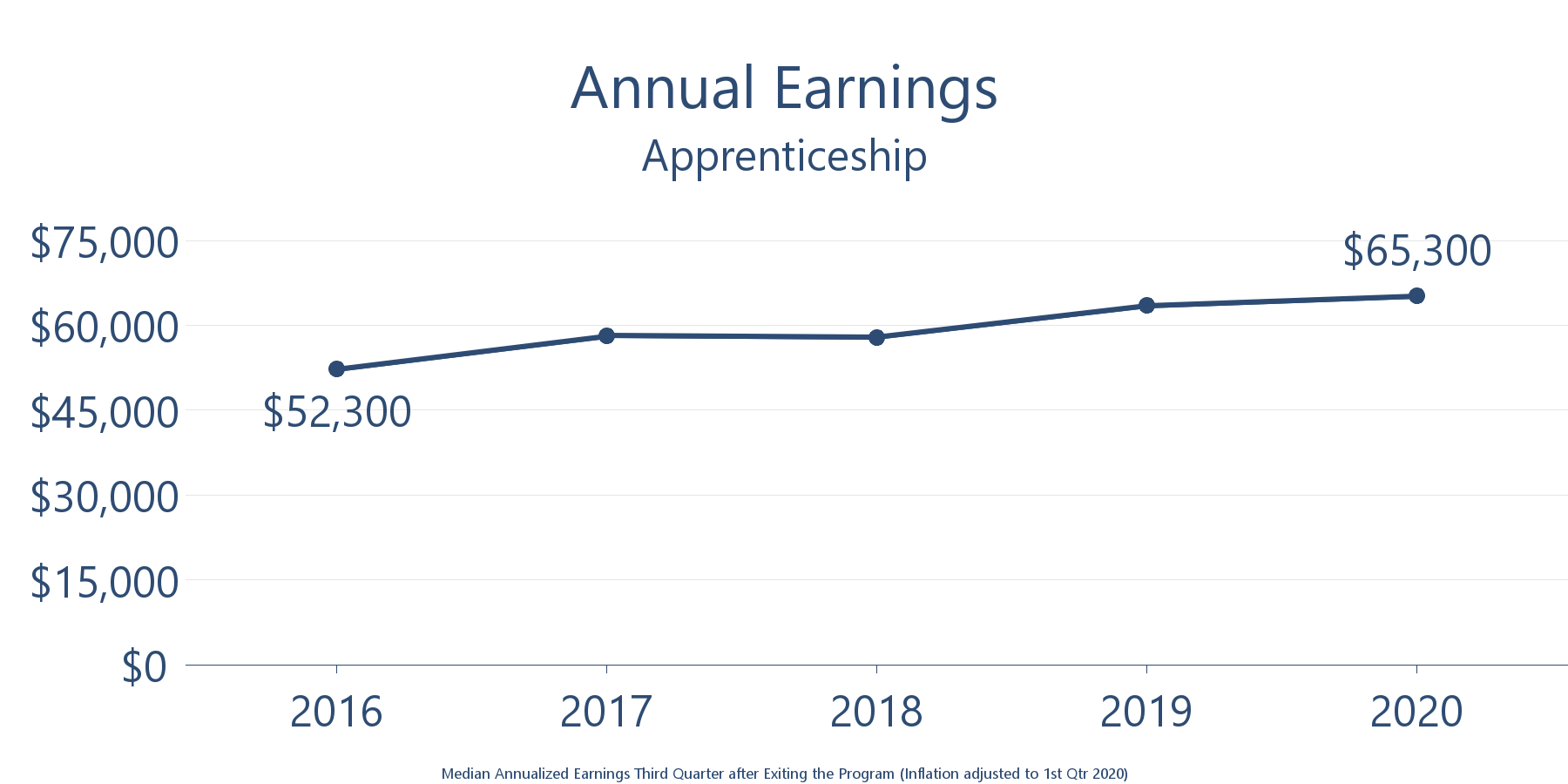Apprenticeship
Training that combines classroom instruction with paid, on-the-job training under the supervision of a journey-level craft person or trade professional. Apprenticeships are governed by the Washington State Apprenticeship and Training Council and administered by the Department of Labor and Industries (L&I).
State Core Indicator Results
| Employment Percentage of participants who were employed, as reported to the Employment Security Department during the third quarter after leaving the program.* |
All 84% Completers 94% |
| Earnings Median annualized earnings six to nine months after leaving the program. (Quarterly earnings are the result of hourly wage rates and the number of hours worked in a calendar quarter. To derive annualized earnings, quarterly earnings are multiplied by four.) |
All $65,300 Completers $89,300 |
| Skills Percentage of participants who obtained an appropriate credential. (Percentage based on all participants, including those who did not receive training through the program.) |
47% |
| Net Participant Benefits Average additional yearly earnings plus benefits (such as health insurance, paid vacation, and sick leave). Overall benefits are calculated by subtracting tuition costs, foregone earnings while in a workforce program, reduced government assistance, and increased taxes because of higher earnings. |
$30,200 |
| 10-Year Economic Impact Total net economic benefit over 10 years generated by workforce programs as a result of increased employment, increased net earnings, and reduced government assistance, minus total program costs and tuition. |
$4.3 billion |
| 10-Year Taxpayer Return on Investment Net return on investment to taxpayers over 10 years from publicly funded workforce programs due to increased tax revenue resulting from increased earnings and reduced government assistance. |
$7.80 to 1 |
*Includes some out-of-state employment data, but not all of it. Does not include data on self-employment.


